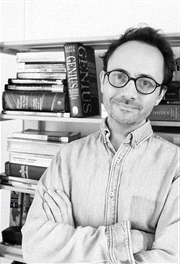Tutor HuntResources Physics Resources
Spacetime From Causal Structure (abstract & Introduction)
The abstract and introduction of my theoretical physics masters thesis
Date : 02/09/2015
Abstract: In the 1970s it was shown by Hawking et al that the causal structure of any spacetime fulfilling certain mild causality criteria encodes almost all of the geometrical and topological properties of that spacetime. This result forms the conceptual basis of a relatively recent approach to quantum gravity, causal set theory, in which the continuous spacetime manifold is replaced by a discrete structure. This report explores certain aspects of causal structure in both the continuous and discrete cases. First we give an explicit construction of the Minkowski metric, up to a global scale factor, using only the causal structure of Minkowski space. We then illustrate with computational simulations various known results that describe how dimensional and topological information is encoded in a causal set. Finally we discuss a recent proposal for a distance measure on a space of objects which includes both causal sets and Lorentzian manifolds. We conclude that this measure has some promising features but that further analytic and computational work is required before it is a truly useful tool.
Introduction: With the development of Special Relativity came the understanding that spacetime possesses an intrinsic causal structure. One way to view this is as a consequence of the finite speed of light - information, and hence causal influences, cannot propagate at velocities greater than c.
Work carried out in the 1960s and 70s by Zeeman [1], Hawking, King and McCarthy [2] and Malament [3] highlighted the connection between the overall properties of a spacetime manifold (its topology, differential structure and geometry) and its causal structure. The key result from this work may be summarised as follows:
Theorem 1. (Hawking, King, McCarthy, Malament): A pair (M,g), where M is a distinguishing Lorentzian manifold equipped with metric g, is completely specified by the causal structure implied by M and g, plus a volume element. (A manifold is "distinguishing" if the chronological past and future of each point is unique).
In other words, given the causal structure of (M,g) - that is, a list of which points are in causal contact - we may completely recover (M, g) up to some scale factor ?2(x) in the metric. To put this yet another way, causal structure almost completely encodes the geometric and topological properties of spacetime.
These results are applicable only to the continuous space-times of General Relativity. However, several theoretical results - including clues from black hole thermodynamics [6, 7] and the arbitrary short distance cut-offs taken in quantum field theories [8] - seem to imply that spacetime may actually have a fundamentally discrete character. Many proposals for discretising space and time have been made (see e.g. [9, 10, 11, 12]). The theory we consider in this report is one in which the discrete microstructure of space reflects its macroscopic causal struc- ture - this is causal set theory. Many excellent reviews of causal set theory exist - see e.g. [5, 13, 14, 26].
A key feature of causal set theory is that we can determine the volume of a spacetime region simply by counting the number of discrete elements constituting that region (see Section 3) and hence we have both the causal structure and a volume element. Following Theorem 1, this inspires the hope that, at least for certain classes of causal set, we should be able to recover manifold-like geometry and topology on large enough scales.
In this report we will be exploring these ideas. In Section 2 we will explicitly demonstrate that the metric of the simplest four-dimensional Lorentzian manifold, Minkowski spacetime, can be recovered (up to an overall scale factor) from its causal structure. Section 3 illustrates ways in which dimensional and topological information can be extracted from a causal set. In Section 4 we discuss a new proposal for a distance measure on a space of objects which includes both causal sets and Lorentzian manifolds.
This resource was uploaded by: Jack

